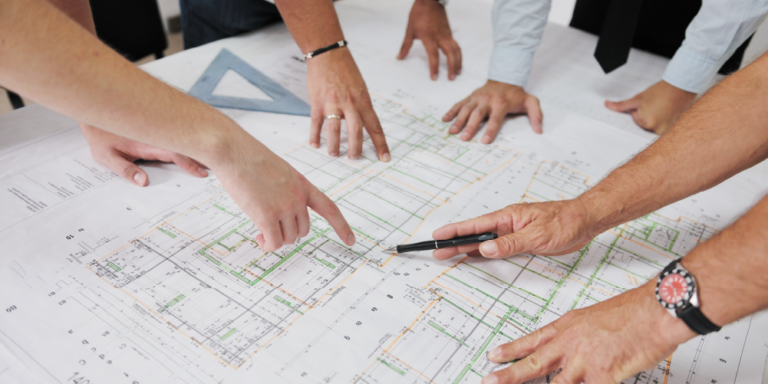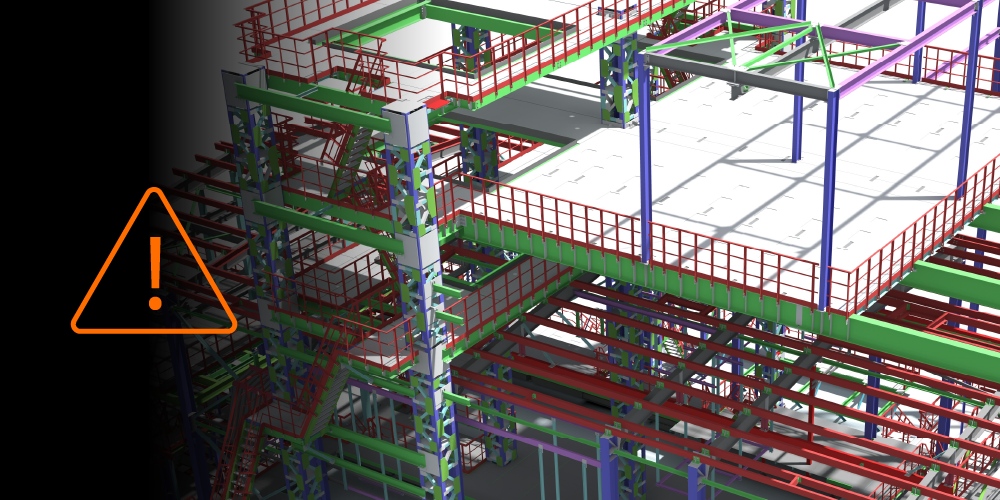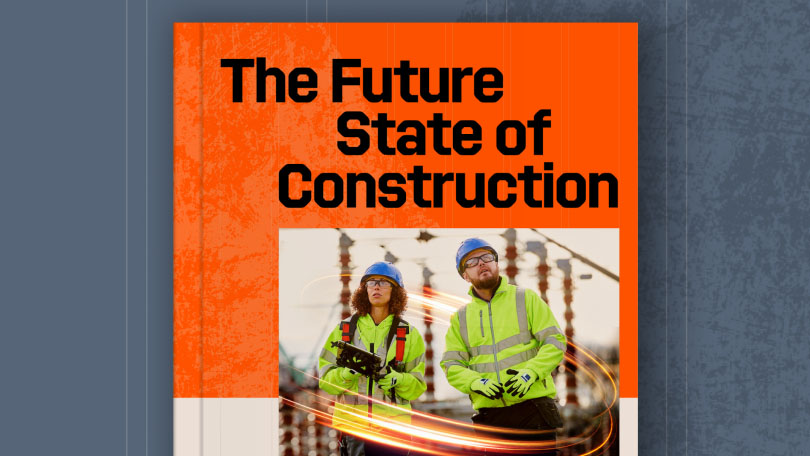Related Articles
— 6 min read
Streamlining Your Construction Workflow for Better Project Delivery

Last Updated Aug 28, 2025

Josh Krissansen
48 articles
Josh Krissansen is a freelance writer with two years of experience contributing to Procore's educational library. He specialises in transforming complex construction concepts into clear, actionable insights for professionals in the industry.
Last Updated Aug 28, 2025

In commercial construction, effective coordination is not a luxury—it’s a requirement. As project scopes expand and regulatory oversight tightens, reliable workflows become the infrastructure that underpins successful delivery.
Without structured methods for managing scope, sequencing, and approvals, even experienced teams can encounter compliance issues, rework, and costly disruptions. Robust workflows provide the necessary rigour and clarity to navigate complexity at scale.
This guide explores the strategic role of construction workflows, the attributes that distinguish high-performing systems, and how they enable consistent, compliant delivery on complex Australian job sites.
Table of contents
What is a Construction Workflow?
A construction workflow is a defined sequence of tasks, responsibilities, and information exchanges that guide a project from start to finish. Each workflow outlines who is responsible, what must happen, and how work progresses through each phase.
On Australian sites, where multiple trades operate under strict regulations and sequencing pressures, well-defined workflows are essential.
For example, coordinating foundation works may involve excavation crews, framers, concrete suppliers, and surveyors. A well-defined workflow ensures each party knows when to act and what information or approvals are required to complete their part.
When steps are followed in the right order, with clear accountability, teams reduce the risk of non-compliance, rework, and delays.
Characteristics of Efficient Construction Workflows
While workflows will differ by project type and delivery method, high-performing teams apply a consistent set of principles:
- Repeatable: Standardised workflows improve quality and reduce rework, making it easier to execute processes across multiple projects.
- Connected: Teams work from the same real-time information, minimising silos and reducing miscommunication.
- Transparent: Each step and its responsible party are clearly defined, improving coordination and accountability.
- Collaborative: Multiple stakeholders can contribute and access shared documents, drawings, and updates.
- Automated: Automating routine steps helps move tasks forward efficiently, saving time and reducing human error.
- Streamlined: Lean workflows remove unnecessary steps, helping the right people act quickly with the information they need.
Common Workflows in Commercial Construction
Commercial construction projects rely on a wide range of workflows to manage each phase of delivery. These help teams control scope, manage cost, ensure safety, and hand over projects with confidence.
Preconstruction
Preconstruction lays the groundwork for a successful build. Workflows here ensure scope, costs, and schedules are properly aligned before work begins.
| Workflow | Description | Stakeholders |
| Estimating and Tendering | Estimators collaborate with specialised contractors and suppliers to produce cost estimates. These are used to perform tenders for submissions. | Estimator, Project Manager, Tender Manager, Suppliers |
| Tender Solicitation and Review | Design teams prepare the drawings and specifications for the tender package. The Owners invite often through an RFP or ITB, to submit tenders. The Owner then compares qualified tenders bids and selects a contractor based on predefined criteria. | Owner, Design Team, Head Contractor |
Financial
Financial workflows give project teams the structure to manage budgets, payments, and cost tracking throughout the build. These processes support transparency and help control spending.
| Workflow | Description | Stakeholder |
| Budgeting | The Project Manager develops a project budget based on estimates. Together with the Project Accountant, they organise it according to the established Cost Breakdown Structure (CBS) and track actual expenses, updating the budget with any change orders. | Project Manager, Estimator, Project Accountant |
| Invoicing | Subcontractors submit payment applications for completed work. The Project Manager and Architect review these applications to ensure accuracy before forwarding them to the Project Accountant for processing. | Subcontractors, Project Manager, Architect, Project Accountant |
| Payment Processing | Following approval of payment applications, the Owner and Architect authorises and releases payment. The accounting team processes these payments and collects any statutory declarations or proof-of-payments documents required by state Security of Payment Acts. | Owner, Architect, Head Contractor, Subcontractors, Project Accountant |
Requests for Information (RFIs)
The RFI process resolves design questions and issues as they’re surfaced. A clear workflow allows designers and contractors to respond quickly and keep construction moving forward.
| Workflow | Description | Stakeholder |
| RFI Management | Contractors submit RFIs to clarify design details or resolve discrepancies during construction. The Design Team prepares responses and distributes them to all relevant parties to ensure alignment and prevent delays. | Project Manager, Head Contractor, Subcontractors, Design Team, Engineers, Owner |
Submittals
Submittal workflows confirm that materials and methods meet design requirements. This early review process helps catch issues before they affect the build.
| Workflow | Description | Stakeholder |
| Submittal Review | Subcontractors work with the Head Contractor to compile necessary documents, such as shop drawings and product samples, to verify compliance with project specifications. The Design Team reviews and approves these submissions before procurement or installation. | Subcontractors, Head Contractor, Project Manager, Design Team |
Change Management
Change is a normal part of construction. A reliable workflow helps teams evaluate, approve, and act on changes while keeping momentum on site.
| Workflow | Description | Stakeholder |
| Change Order Processing | Changes to the project's design, scope, timeline, or costs are initiated by the Owner, Design Team, Head Contractor, or Subcontractors. The Head Contractor collaborates with Subcontractors to prepare estimates for cost and schedule impacts. The Design Team and Owner then review and negotiate the changes before approval and implementation. | Project Manager, Head Contractor, Subcontractors, Estimator, Owner, Design Team |
Quality and Safety
Dedicated workflows for quality and safety verify that work meets required standards. They support inspections, training, and compliance across the site.
| Workflow | Description | Stakeholder |
| Quality Control | The Site Manager conducts regular inspections to ensure work meets project specifications and code requirements. Any non-compliant work is documented and rectified promptly to maintain quality standards. | Site Manager, Quality Control Team, Subcontractors |
| Safety Management | The Safety Manager oversees worksite practices to ensure compliance with safety standards and regulations. This includes conducting safety audits, training sessions, and incident investigations to promote a safe working environment. | Safety Manager, Site Supervisor, Workers, Subcontractors |
Closeout
The closeout workflow finalises outstanding work, documentation, and approvals. A clear process ensures a smooth transition from build to handover.
| Workflow | Description | Stakeholder |
| Project Closeout | The Head Contractor leads the closeout phase by finalising outstanding work, compiling necessary documentation, and ensuring all financial records are complete. This process includes creating a defect list, obtaining final approvals, and preparing the project for handover to the client. | Head Contractor, Project Manager, Subcontractors, Owner |
Benefits of a Defined Construction Workflow
Defined workflows make each role and task sequence easy to follow. This helps avoid confusion, missed steps, and last-minute questions on site.
Increased Efficiency
Standardised workflows allow teams to reuse proven processes across multiple projects, eliminating the need to start from scratch each time. Automation removes repetitive manual tasks, freeing up time for higher-value activities.
With fewer delays and less guesswork, teams can move faster and avoid common bottlenecks.Clear Communication
When workflows are clearly mapped, everyone understands their role, responsibilities, and the order of operations. This reduces confusion and missed steps.
Shared documentation and real-time updates keep all parties aligned, supporting smoother coordination between trades and contractors.Reduced Errors
Standard workflows often include checklists, templates, and digital handoffs that minimise oversights. Real-time data sharing also prevents mistakes caused by outdated or missing information.
Improved Project Control
With well-defined workflows, project teams can track budgets, schedules, and resource use more accurately. Daily reports, progress claims, and WIP tracking provide visibility into project status and help support timely, informed decisions.
Early detection of risks and changes allows teams to act before issues grow, helping protect both timelines and budgets.
Well-defined construction workflows improve delivery across every stage of the project
Workflows give construction teams a reliable system for managing each stage of a project. From planning to handover, they improve visibility, strengthen coordination, and support confident delivery.
Categories:
Written by

Josh Krissansen
48 articles
Josh Krissansen is a freelance writer with two years of experience contributing to Procore's educational library. He specialises in transforming complex construction concepts into clear, actionable insights for professionals in the industry.
View profileExplore more helpful resources

Managing Direct Costs in Construction: How Visibility Drives Profitability
Direct costs define the financial reality of every construction project. They cover the labour, materials, and equipment that drive delivery and determine profitability. But even the best-planned budgets can shift...

BIM Clash Detection: Reducing Rework, Delays, and Risk in Construction
Design clashes can be a significant hidden cost in construction, as each conflict between systems risks expensive rework, project delays, and reduced margins. BIM clash detection empowers teams to identify...

Next-Gen Job-Costing: Ready to Move? 5 Things to Consider Before You Get Started
In this three-part series, Quantity Surveyor turned Financial Solutions Specialist Clint Burgess uncovers the real-world gains for people, processes, and profits when businesses move from legacy to next-generation Enterprise Resource...

From Workarounds to Workflow: Solving Construction’s Legacy Job-Costing System Challenges with Next-Gen Tools
In this three-part series, Quantity Surveyor turned Financial Solutions Specialist Clint Burgess uncovers the real-world gains for people, processes, and profits when businesses move from legacy to next-generation Enterprise Resource...
